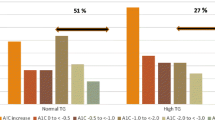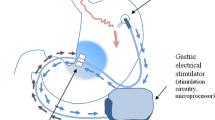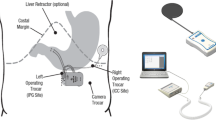Abstract
An implantable gastric stimulator (IGS®) has been used for the treatment of obesity with promising results. However, possible mechanisms involved with the treatment of obesity using an IGS are not well understood. According to recent clinical and basic studies, it seems that an IGS reduces appetite and increases satiety, attributed to its inhibitory effects on gastric motility and its direct effects on the central nervous system and hormones related to satiety and/or appetite. It has been indicated that chronic gastric stimulation impairs intrinsic gastric myoelectrical activity in the fed state, induces gastric distention in the fasting state and inhibits postprandial antral contractions. The impairment of gastric myoelectrical activity and contractions is associated with impaired digestion and emptying of the stomach, which may lead to early satiety and reduced food intake. The induction of gastric distention in the fasting state results in activation of stretch receptors, causing satiety. It has also been shown that an IGS may have direct regulatory effects on the central nervous system and certain hormones. Modulation of neuronal activities and release of certain hormones with an IGS may also explain the reduction of appetite and the increase of satiety.
Similar content being viewed by others
References
Chen J, McCallum RW, eds. Electrogastrography: Principles and Applications. New York: Raven, 1995.
Chen JDZ, Pan J, McCallum RW. Clinical significance of gastric myoelectrical dysrhythmias. Dig Dis 1995; 13: 275–90.
Cigaina V. Gastric pacing as therapy for morbid obesity: preliminary results. Obes Surg 2002; 12: 12S–16S.
D’argent J. Gastric electrical stimulation as therapy of morbid obesity: preliminary results from the French study. Obes Surg 2002: 12: 21S–25S.
Ouyang H, Yin JY, Chen JDZ. Inhibitory effects of chronic gastric electrical stimulation on food intake and weight and their possible mechanisms. Dig Dis Sci 2003; 48: 698–705
Lin Z, Denton S, Durham S et al. at]Fr Retrograde gastric electrical stimulation (RGES) impairs gastric myoelectrical activity in patients with morbid obesity. Gastroenterology 2002; 122(4): A–326.
Xing JH, Chen JD. Effects and mechanisms of longpulse gastric electrical stimulation on canine gastric tone and accommodation. Neurogastroenterology and Motility 2003; 15: 380.
Zhu HB, Xing JH, Chen JD. Pathophysiological roles of artificially induced ectopic tachygastria. Neurogastroenterology and Motility 2003; 15: 350.
Qin C, Sun Y, Chen JDZ et al. Effects of gastric electric stimulation on neuronal activity in nucleus tractus solitarii (NTS). Gastroenterology 2004 (in press).
Cigaina V, Hirschberg AL. Gastric pacing for morbid obesity: plasma levels of gastrointestinal pep tides and leptin. Obes Res 2003; 11: 1456–62.
Author information
Authors and Affiliations
Corresponding author
Rights and permissions
About this article
Cite this article
Chen, J. Mechanisms of Action of the Implantable Gastric Stimulator for Obesity. OBES SURG 14 (Suppl 1), S28–S32 (2004). https://doi.org/10.1007/BF03342135
Published:
Issue Date:
DOI: https://doi.org/10.1007/BF03342135




